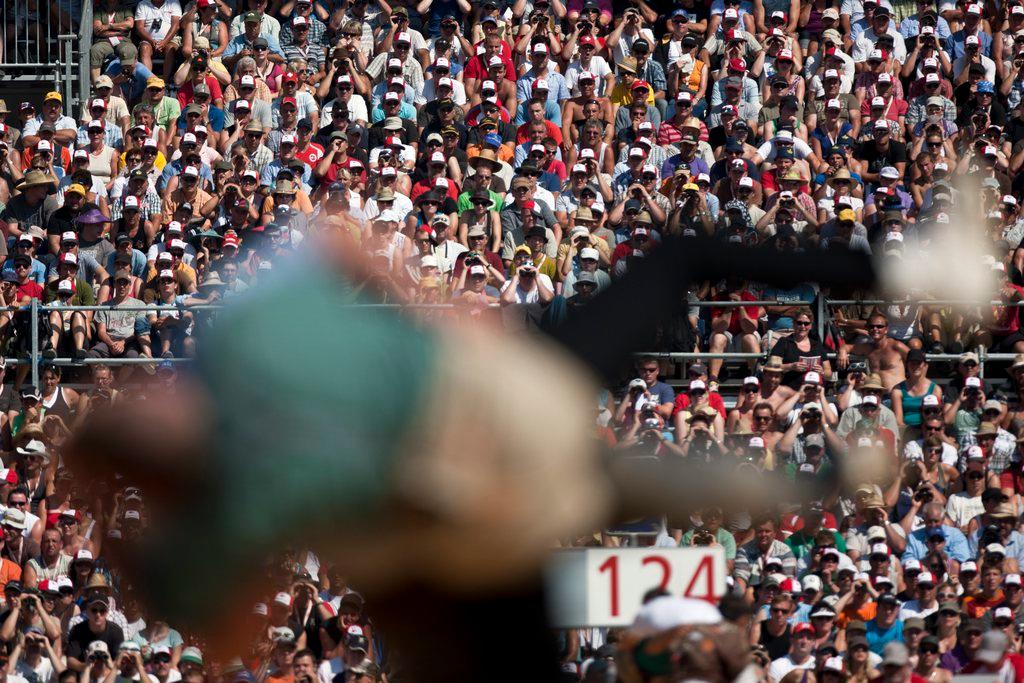
Muni Max: how a giant bull got a Swiss canton raging

“Muni Max”, the symbol of the 2025 Swiss Wrestling and Alpine Festival, is huge – as is the controversy around his move to a neighbouring canton.
The Swiss Wrestling and Alpine Festival External linktakes place every three years. The symbol of the most recent event, which was held at the end of August in Mollis in canton Glarus, eastern Switzerland, was therefore intended to be correspondingly impressive.
The bull – known as a Muni in wrestling jargon – exceeded all expectations: 21 metres in height, 36 metres in length, around ten metres in width and weighing in at 182 tonnes. It became a major attraction even during its construction.
Some 220 companies and around 500 wood-making apprentices from eastern Switzerland were involved in the construction, which consists of more than 1,200 cubic metres of Swiss timber and 437 prefabricated parts connected by almost 19,000 screws.

More
Schwingen: from a sawdust ring to a mega-event
But enough of the numbers. According to the organisers, the highly symbolic work of art should express the perfect combination of traditional craftsmanship and modern timber construction technology and symbolise the cultural value of Schwingen, as Swiss wrestling is known.
But what does a bull have to do with Switzerland’s unofficial national sport? Well, the winner of the wrestling festival traditionally wins a Muni. This year Armon Orlik from Graubünden was presented with a fine specimen called Zibu.

However, Muni Max was not to remain a flash in the pan. After the festival, the question arose as to where he would live in future. Various cantons showed interest, including Glarus, Uri, St Gallen, Appenzell Outer Rhodes, Schwyz and Graubünden.
But Uri had a trump up its sleeve: its cantonal coat of arms is adorned with a bull’s head. The “Max the Uri bull” association was founded and campaigned for the purchase of the giant animal. It soon secured the necessary funding.
“The largest Muni in Switzerland for the canton with the mighty bull in its coat of arms – it could hardly be more appropriate,” declared Blick.

The project managers are expecting costs of around CHF1.85 million ($2.35 million), with the purchase price for the bull coming to CHF1.2 million.
Many companies from Uri and Central Switzerland chipped in, including entrepreneur Samih Sawiris, who has built a tourism project in the Uri resort of Andermatt with several hotels, holiday homes and holiday flats. “He’s important, but he’s not the main contributor,” association president Franz-Xaver Simmen told 20 Minuten.
New name
But because nobody in canton Uri calls a bull a Muni, Max needed a new name. Thus “Max the Uri bull” will welcome visitors who will be able to take a lift up to the four floors inside him.
The plan is also to give him a nose ring, similar to the heraldic animal of canton Uri. This will be made from regional wood and painted red, as on the canton’s coat of arms.
In future, Max is to stand permanently in the Nätschen area above Andermatt, where he will attract visitors, provide a tourist boost and serve as a symbol of tradition and innovation.

Glarus isn’t happy
The decision in favour of Uri triggered strong reactions in Glarus and the surrounding area. Regional politicians were disappointed, even frustrated.
They feared that the move to Uri would mean the loss of not only a spectacular work of art but also of an economic and cultural stimulus.
“It’s a shame that Max isn’t staying. We would still have had something of him in 15 years,” Glarus councillor Andreas Luchsinger told the Swiss News Agency Keystone-SDA.
Simone Eisenbart, managing director of the Glarus chamber of commerce, told news portal Watson: “I’m sure that if Muni Max could talk, he’d want to stay with us.”

More
Swiss wrestlers from abroad are proud of their tradition
For many people in Glarus, Muni Max was much more than just a wooden structure – he had quickly become a local landmark, a symbol of the region and its craftsmanship.
A project supported by locals and the business community, which wanted to set up Max permanently in the traffic-free Glarus holiday resort of Braunwald, failed owing to opposition from environmental organisations.

Many people criticise the fact that canton Glarus lacked a clear vision for the future use of the giant bull. The lack of unity in the region was ultimately the decisive factor in the loss of Muni Max.
Jakob Kamm, president of the wrestling festival organising committee, tried to calm the waves. “It doesn’t matter where Max goes. He’ll always be associated with our wonderful Swiss Wrestling and Alpine Festival,” he told Keystone-SDA.
Bull or bear market?
Meanwhile, Max was driven to Uri in 32 lorries with a police escort. The purchase was seen as an opportunity to establish the wooden bull as a cultural and tourist landmark in the canton, according to media reports.
However, critical voices were also raised in Andermatt because the building permit had been fast-tracked. Other construction projects have to wait much longer for decisions.
In addition, Sonntagsblick reports that a dispute has broken out in Andermatt, whose coat of arms features a black bear…
Correction: This article was updated on September 23, 2025, to point out that a project in Braunwald failed owing to opposition from environmental groups.
Edited by Balz Rigendinger. Adapted from German by Thomas Stephens
More

In compliance with the JTI standards
More: SWI swissinfo.ch certified by the Journalism Trust Initiative


















![The four-metre-long painting "Sonntag der Bergbauern" [Sunday of the Mountain Farmers, 1923-24/26] had to be removed by a crane from the German Chancellery in Berlin for the exhibition in Bern.](https://www.swissinfo.ch/content/wp-content/uploads/sites/13/2025/12/01_Pressebild_KirchnerxKirchner.jpg?ver=1ea8acae)












You can find an overview of ongoing debates with our journalists here . Please join us!
If you want to start a conversation about a topic raised in this article or want to report factual errors, email us at english@swissinfo.ch.